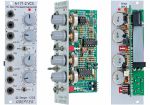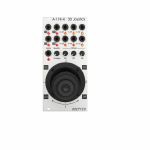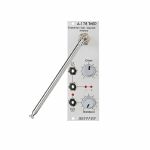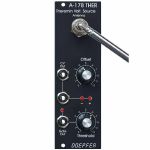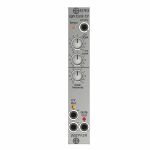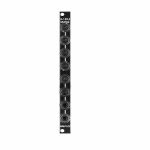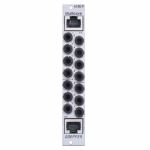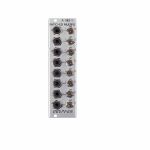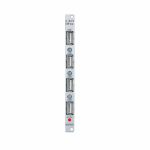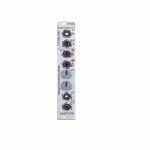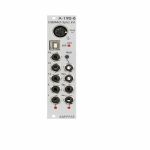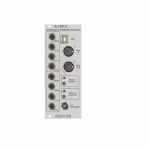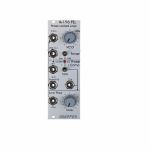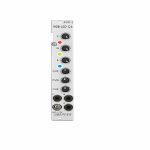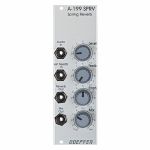100% Compra Segura
Studio equipment
Our full range of studio equipment from all the leading equipment and software brands. Guaranteed fast delivery and low prices.
100% Compra Segura
DJ equipment
Our full range of DJ equipment from all the leading equipment and software brands. Guaranteed fast delivery and low prices. Visit Juno DJ
Filter
Stock
Brand
Featured
Price
Tags
Synth modules
The Eurorack modular synth format is one of the most exciting areas of music technology. Pioneered by Doepfer, there are now hundreds of brands offering compatible modules of all varieties. You can combine your choice of the best oscillators, filters and much more in order to create a unique, bespoke synth setup which perfectly suits your needs.
Eurorack modules offer the biggest range of options you can imagine, from basic analogue modules which replicate the sound of classic vintage synths, through to digital modules which allow you to explore completely new approaches to making music.
Whether you’re a beginner or a more experienced modular head, you can take your pick of the best modules from leading brands including Mutable Instruments and ALM Busy Circuits.
Our range also includes accessories, cases, patch cables and much more, allowing you to build and customise your perfect modular synth setup.

Doepfer A-160-2v Clock/Trigger Divider II Vintage Edition Module (black) (clock modulator/frequency divider synth module)
Cat: 864696 Rel: 14 Mar 22
Module A-160-2 is an enhanced version of the standard clock divider A-160.
Notes: Module A-160-2V is an enhanced version of the standard clock divider A-160. The module is a frequency divider for clock/trigger/gate signals, designed to be a source of lower frequencies, particularly for rhythm uses.
The Clock input will take any digital signal from, eg., an LFO, MIDI sync, or the gate from a MIDI-CV interface. At the outputs, you have access to three sets of seven different sub-divided clock signals, from half the clock frequency down to 1/128. The low/high levels of the output signals are 0V and about +10V.
The A-160-2V also has a reset input. Whenever a reset signal is sensed, all outputs are set to certain levels which depend upon the selected mode.
HP : 4
… Read moreThe Clock input will take any digital signal from, eg., an LFO, MIDI sync, or the gate from a MIDI-CV interface. At the outputs, you have access to three sets of seven different sub-divided clock signals, from half the clock frequency down to 1/128. The low/high levels of the output signals are 0V and about +10V.
The A-160-2V also has a reset input. Whenever a reset signal is sensed, all outputs are set to certain levels which depend upon the selected mode.
HP : 4
5 in stock $108.45
Click for better price!
or call +44 20 7424 1960
quote 864696
quote 864696
Doepfer A-160-5v Voltage Controlled Clock Multiplier & Ratcheting Controller Module (vintage edition) (synth module)
Cat: 745789 Rel: 10 Sep 19
Voltage-controlled clock multiplier with CV or manual control - 4HP
Notes: Module A-160-5 is a voltage controlled clock multiplier. The incoming clock signal (socket Clock In) is multiplied by a factor that depends upon the control voltage on socket CV In (0...+5V) and the position of the Mode switch. The multiplied clock signal is available at the socket Clock Out. According to the position of the Mode switch different clock multiplying factors are assigned to the control voltage. With 0V CV no clock output is generated. This state is indicated by "all LEDs off". With increasing CV integer factors (left position of the mode switch), power of two factors (middle position) or a mix of both (right position) are obtained. Nine LEDs are used to show the currently selected multiplying factor. In addition two LEDs are used to display the incoming and outgoing clock signal.
A manual control is used to adjust the clock multiplication factor manually without the need of an external control voltage. The voltage generated by this control ("Manual") is normalled to the CV In socket. As long as no plug is inserted into the CV In socket the clock multiplication factor is adjusted by means of the manual control knob and displayed by the LEDs. For dynamic applications (like the ratcheting function described below) the manually generated CV is overwritten by the external CV which has to be fed into the CV In socket.
The module can be used for all kind of clock multiplying applications. One important example is the generation of so-called ratcheting sequences. The band Tangerine Dream is famous for this kind of sequences. A normal sequencer generates only one gate signal per step. A ratcheting sequence may have also more than one gate pulses per step. This function can be obtained by using the A-160-5: one CV output of the sequencer is used to define the number of gate pulses per step. If the control of the step in question is fully CCW the generated CV is 0V and no gate signal is generated (mute of the step). When the control of the step in question is turned clockwise one, two or more gate pulses are generated depending upon the position of the mode switch and the voltage generated by the CV at this step.
Technical note: Due to the nature of clock multiplying it takes a few input clock pulses until the clock output is stable. One has to average a few input clock pulses to generate the multiplied clock output signal. Even when the input clock frequency changes it will take a few cycles until the output clock signal is correct as the module cannot foresee the future of the clock input signal. The generated clock output signal is derived from the last few cycles of the clock input signal. Consequently the module should be driven only by a clock signal with constant or slowly changing frequency.
… Read moreA manual control is used to adjust the clock multiplication factor manually without the need of an external control voltage. The voltage generated by this control ("Manual") is normalled to the CV In socket. As long as no plug is inserted into the CV In socket the clock multiplication factor is adjusted by means of the manual control knob and displayed by the LEDs. For dynamic applications (like the ratcheting function described below) the manually generated CV is overwritten by the external CV which has to be fed into the CV In socket.
The module can be used for all kind of clock multiplying applications. One important example is the generation of so-called ratcheting sequences. The band Tangerine Dream is famous for this kind of sequences. A normal sequencer generates only one gate signal per step. A ratcheting sequence may have also more than one gate pulses per step. This function can be obtained by using the A-160-5: one CV output of the sequencer is used to define the number of gate pulses per step. If the control of the step in question is fully CCW the generated CV is 0V and no gate signal is generated (mute of the step). When the control of the step in question is turned clockwise one, two or more gate pulses are generated depending upon the position of the mode switch and the voltage generated by the CV at this step.
Technical note: Due to the nature of clock multiplying it takes a few input clock pulses until the clock output is stable. One has to average a few input clock pulses to generate the multiplied clock output signal. Even when the input clock frequency changes it will take a few cycles until the output clock signal is correct as the module cannot foresee the future of the clock input signal. The generated clock output signal is derived from the last few cycles of the clock input signal. Consequently the module should be driven only by a clock signal with constant or slowly changing frequency.
3 in stock $109.48
Click for better price!
or call +44 20 7424 1960
quote 745789
quote 745789
Doepfer A-171-2 Voltage Controlled Slew Processor & Generator Module (silver) (envelope generator/function generator/LFO/oscillator/slew limiter synth module)
Cat: 577809 Rel: 23 Oct 19
Slew processor/generator - 8HP
Notes: Module A-171-2 is a voltage controlled slew limiter with a lot of additional features beyond a simple slew limiter. It's mostly a licensed copy of Ken Stones VCS which is in turn based on the Serge VCS.
Typical applications:
- VC Slew Limiter / VC Portamento / VC Low Pass Gate:
Cycle switch = off, no trigger signal applied to Trig socket: Voltage controlled Slew limiter or portamento generator: the signal applied to the signal input is "slewed". The slew up and down times are controlled manually by means of the Up and Down controls, the effect of the CV Up and CV Down control voltages are controlled by the CV Up and CV Down controls, in exponential mode these controls also affect the slew shape (see symbols at the CCW and CW positions of the controls).
If an audio signal is applied an short slew rates are chosen the module works as a simple VCF/VCA combo.
- A/D Envelope Generator / Pulse Delay / Subharmonic Generator:
Cycle switch = off, trigger signal applied to Trig socket, no input signal: Simple Attack/Decay envelope Generator, the rise and fall times are controlled like the slew up/down times above, including the shape of the falling/rising slope of the envelope, the exp. CV input can be used to change both attack and decay simultaneously.
At the End output a pulse appears as the end of the envelope is reached (less than about 20mV), this can be used as a pulse delay.
If a series of triggers are applied to the VCS faster than the total rise and fall times, the module will divide the incoming signal by a whole number. In the audio range the output will be the sub-harmonic series.
- VCLFO / VCO:
Cycle switch = on, no trigger signal applied to Trig socket, no input signal: Voltage controlled LFO/VCO, the rise and fall times of the waveform are controlled like the slew up/down times above, including the shape of the falling/rising slope
the exp. CV input can be used like the CV input of a VCO or VCLFO, the response is exponential but not exactly 1V/oct.
… Read moreTypical applications:
- VC Slew Limiter / VC Portamento / VC Low Pass Gate:
Cycle switch = off, no trigger signal applied to Trig socket: Voltage controlled Slew limiter or portamento generator: the signal applied to the signal input is "slewed". The slew up and down times are controlled manually by means of the Up and Down controls, the effect of the CV Up and CV Down control voltages are controlled by the CV Up and CV Down controls, in exponential mode these controls also affect the slew shape (see symbols at the CCW and CW positions of the controls).
If an audio signal is applied an short slew rates are chosen the module works as a simple VCF/VCA combo.
- A/D Envelope Generator / Pulse Delay / Subharmonic Generator:
Cycle switch = off, trigger signal applied to Trig socket, no input signal: Simple Attack/Decay envelope Generator, the rise and fall times are controlled like the slew up/down times above, including the shape of the falling/rising slope of the envelope, the exp. CV input can be used to change both attack and decay simultaneously.
At the End output a pulse appears as the end of the envelope is reached (less than about 20mV), this can be used as a pulse delay.
If a series of triggers are applied to the VCS faster than the total rise and fall times, the module will divide the incoming signal by a whole number. In the audio range the output will be the sub-harmonic series.
- VCLFO / VCO:
Cycle switch = on, no trigger signal applied to Trig socket, no input signal: Voltage controlled LFO/VCO, the rise and fall times of the waveform are controlled like the slew up/down times above, including the shape of the falling/rising slope
the exp. CV input can be used like the CV input of a VCO or VCLFO, the response is exponential but not exactly 1V/oct.
1 in stock $122.00
Click for better price!
or call +44 20 7424 1960
quote 577809
quote 577809
Doepfer A-174-4 3D Joystick Module (silver) (controller/CV modulation/expression module)
Cat: 765892 Rel: 30 Oct 20
Control voltage module - 12HP
Notes: Module A-174-4 modules outputs three control voltages generated by a spring-loaded X/Y cross potentiometer (so-called joy stick) and a Gate signal. The control voltages for X and Y are controlled by the X and Y position of the joystick in the usual way. The third control voltage Z is controlled by the rotation of the spring-loaded joystick knob. The Gate signal is generated by a button at the center/top of the joystick knob.
For each control voltage the non-inverted signal (X, Y, Z) as well as the inverted signal with adjustable offset (-X+XO, -Y+YO, -Z+ZO) are available. The generic joystick control voltages are bipolar, i.e. they range from typ. -5V (lowest position) via 0V (center position) to typ. +5V (highest position). The "Overlap" switches can be used to add a fixed offset voltage of typ. +5V to the non-inverting output in question so that the output voltage range changes to typ. 0...+10V (rather than -5...+5V). That's necessary if e.g. a VCA has to be controlled, which requires a pure positive control voltage range. The switches are named "overlap" because they allow the overlapping of the non-inverting CV output (X, Y, Z) with the inverting output (-X+XO, -Y+YO, -Z+ZO) for crossfading applications. With the overlap switch "on" and appropriate setting of the offset control it's possible to obtain a control voltage range of 0...+10V for the non-inverting output and +10V...0V (i.e. same range but opposite direction) for the inverting output.
The offset voltages which are added to the inverting outputs can be adjusted by means of three small potentiometers. That way different kinds of control voltage ranges are possible, e.g.
-5V ... +5V for the non-inverting output and +5V ... -5V for the inverting output ( Overlap = off, Offset = 0)
0 ... +10V for the non-inverting output and +10V ... 0V for the inverting output ( Overlap = on, Offset = max)
-5V ... +5V for the non-inverting output and +10V ... 0V for the inverting output ( Overlap = off, Offset = max)
0 ... +10V for the non-inverting output and +5V ... -5V for the inverting output ( Overlap = on, Offset = 0)
On top of this the four quadrant voltages Q1, Q2, Q3 and Q4 are available. A quadrant voltage becomes positive when the joystick is positioned in the quadrant in question.
Each CV output is equipped with an LED that displays the present voltage.
Because of the construction height of the joystick (about 7 cm) the module cannot be installed into the cases A-100P6, A-100P9, A-100PMS6, A-100PMS9 and A-100PMS12 during transportation as the depth of the case cover is not sufficient. Into the base cases A-100PB and A-100PMB as well as in all other cases without cover the module can be installed without problems.
HP : 12
… Read moreFor each control voltage the non-inverted signal (X, Y, Z) as well as the inverted signal with adjustable offset (-X+XO, -Y+YO, -Z+ZO) are available. The generic joystick control voltages are bipolar, i.e. they range from typ. -5V (lowest position) via 0V (center position) to typ. +5V (highest position). The "Overlap" switches can be used to add a fixed offset voltage of typ. +5V to the non-inverting output in question so that the output voltage range changes to typ. 0...+10V (rather than -5...+5V). That's necessary if e.g. a VCA has to be controlled, which requires a pure positive control voltage range. The switches are named "overlap" because they allow the overlapping of the non-inverting CV output (X, Y, Z) with the inverting output (-X+XO, -Y+YO, -Z+ZO) for crossfading applications. With the overlap switch "on" and appropriate setting of the offset control it's possible to obtain a control voltage range of 0...+10V for the non-inverting output and +10V...0V (i.e. same range but opposite direction) for the inverting output.
The offset voltages which are added to the inverting outputs can be adjusted by means of three small potentiometers. That way different kinds of control voltage ranges are possible, e.g.
-5V ... +5V for the non-inverting output and +5V ... -5V for the inverting output ( Overlap = off, Offset = 0)
0 ... +10V for the non-inverting output and +10V ... 0V for the inverting output ( Overlap = on, Offset = max)
-5V ... +5V for the non-inverting output and +10V ... 0V for the inverting output ( Overlap = off, Offset = max)
0 ... +10V for the non-inverting output and +5V ... -5V for the inverting output ( Overlap = on, Offset = 0)
On top of this the four quadrant voltages Q1, Q2, Q3 and Q4 are available. A quadrant voltage becomes positive when the joystick is positioned in the quadrant in question.
Each CV output is equipped with an LED that displays the present voltage.
Because of the construction height of the joystick (about 7 cm) the module cannot be installed into the cases A-100P6, A-100P9, A-100PMS6, A-100PMS9 and A-100PMS12 during transportation as the depth of the case cover is not sufficient. Into the base cases A-100PB and A-100PMB as well as in all other cases without cover the module can be installed without problems.
HP : 12
1 in stock $149.12
Doepfer A-178 Theremin Control Voltage Source Module (silver) (controller/CV modulation/utility synth module)
Cat: 751716 Rel: 23 Oct 19
Theremin controller module - 8HP
Notes: Theremin module for generating a variable control voltage by approaching/removing hand to/from an antenna. The distance range is about 30-40 cm. Additionally the module is equipped with a Gate output with adjustable threshold level. Controls/Inputs/Outputs: antenna input, offset (knob for zero adjust), 2 x CV out, 2 x LED (for CV control positive/negative and zero offset adjust).
To simulate the original Theremin two A-178, a VCO (e.g. A-110) and a linear VCA (e.g. A-130 or A-132) are required. But of course the A-178 can be used to control other functions in the A-100 (e.g. filter frequency, modulation depth and/or speed, tempo, attack/decay time and so on).
The CV output voltage of the A-178 can range - according to the setting of the front panel controls - from -10V...+10V. The gate output switches from 0V to about +10V.
Applications:
- Controlling any voltage controlled parameter of the A-100, e.g. pitch or pulsewidth (VCO A-110), loudness (VCA A-130/131/132), panorama (A-134), filter frequency or resonance (A-120/121/122/123), phasing (A-125), frequency shift (A-126), resonance peaks (A-127), envelope parameters (A-141/142), tempo (A-147)
- Triggering of A-100 activities via gate with adjustable threshold, e.g. starting an envelope (A-140/141/142), Start/Stop of a sequence (A-155), any switching function (A-150/151)
- Conversion into MIDI control change messages is possible with the A-192.
If two or more A-178 are used the distance between the modules/antennas should be at least 40-50 cm. Otherwise the antennas may affect each other.
… Read moreTo simulate the original Theremin two A-178, a VCO (e.g. A-110) and a linear VCA (e.g. A-130 or A-132) are required. But of course the A-178 can be used to control other functions in the A-100 (e.g. filter frequency, modulation depth and/or speed, tempo, attack/decay time and so on).
The CV output voltage of the A-178 can range - according to the setting of the front panel controls - from -10V...+10V. The gate output switches from 0V to about +10V.
Applications:
- Controlling any voltage controlled parameter of the A-100, e.g. pitch or pulsewidth (VCO A-110), loudness (VCA A-130/131/132), panorama (A-134), filter frequency or resonance (A-120/121/122/123), phasing (A-125), frequency shift (A-126), resonance peaks (A-127), envelope parameters (A-141/142), tempo (A-147)
- Triggering of A-100 activities via gate with adjustable threshold, e.g. starting an envelope (A-140/141/142), Start/Stop of a sequence (A-155), any switching function (A-150/151)
- Conversion into MIDI control change messages is possible with the A-192.
If two or more A-178 are used the distance between the modules/antennas should be at least 40-50 cm. Otherwise the antennas may affect each other.
1 in stock $101.15
Click for better price!
or call +44 20 7424 1960
quote 751716
quote 751716
Doepfer A-178v Theremin Control Voltage Source Vintage Edition Module (black) (controller/CV modulation/utility synth module)
Cat: 852800 Rel: 05 Jan 22
Theremin module for generating a variable control voltage by approaching/removing hand to/from an antenna.
Notes: Theremin module for generating a variable control voltage by approaching/removing hand to/from an antenna.
The distance range is about 30 cm. Additionally the module is equipped with a Gate output with adjustable threshold level. To simulate the original Theremin two A-178, a VCO (e.g. A-110) and a linear VCA (e.g. A-130 or A-132) are required. But of course the A-178 can be used to control other functions in the A-100 (e.g. filter frequency, modulation depth and/or speed, tempo, attack/decay time and so on).
The CV output voltage of the A-178 can range - according to the setting of the front panel controls - from -10V...+10V.
The gate output switches from 0V to about +10V.
Power consumption: 60mA at +12V and 20mA at -12V
Depth: 40mm
HP : 8
… Read moreThe distance range is about 30 cm. Additionally the module is equipped with a Gate output with adjustable threshold level. To simulate the original Theremin two A-178, a VCO (e.g. A-110) and a linear VCA (e.g. A-130 or A-132) are required. But of course the A-178 can be used to control other functions in the A-100 (e.g. filter frequency, modulation depth and/or speed, tempo, attack/decay time and so on).
The CV output voltage of the A-178 can range - according to the setting of the front panel controls - from -10V...+10V.
The gate output switches from 0V to about +10V.
Power consumption: 60mA at +12V and 20mA at -12V
Depth: 40mm
HP : 8
1 in stock $96.97
Doepfer A-179-2 Light Controlled Voltage Source II Slim Line Series Module (silver) (controller synth module)
Cat: 847090 Rel: 09 Nov 21
Light Controlled Voltage Source II (Slim Line Series)
Notes: Module A-179-2 can be used to convert different illumination intensities into corresponding analog voltages and a gate signal derived from the analog voltage. It's the successor of the obsolete module A-179.
A light sensitive resistor (LDR) converts the illumination of the internal light sensor into a corresponding analog control voltage. The internal sensor is located at the front panel. Instead of the internal sensor a remote sensor can be connected via a standard patch cable to the module (ext.Sens. socket). An external sensor with a 2 m patch cable (A-100C200) is included. The external sensor is mounted on a small pc board which is equipped also with a 3.5 mm jack socket. The nut of the socket can also be used to mount the external sensor.
The module A-179 is similar to the Theremin module A-178 but uses the illumination intensity instead of the distance between hand and antenna for generating the analog voltage.
One can choose between passive control by covering/shading the sensor via hand or body, or active control by using e.g. a pocket lamp or flashlight. For this two versions of output voltages are available (CV Out + und CV Out -).
The module has these controls and in/outputs available:
ext. Sens.: by means of a standard patch cable the external sensor can be connected to this socket. In this case the internal sensor is turned off.
CV Offset: control to adjust the output voltage which is assigned to a certain illumination (e.g. 0V for complete darkness)
CV Level: control that is used to adjust the sensitivity of the generated output voltage (i.e. how much a certain difference in brightness affects the output voltage)
Gate Threshold: control that is used to adjust the threshold for the generation of the gate signal, an internal jumper is used to define if the gate signal is derived from the CV Out+ or CV Out- voltage.
CV Out+: positive control voltage output, increasing brighness causes the increase of the voltage at this output
CV Out+: negative control voltage output, increasing brighness causes the decrease of the voltage at this output
LED CV Out: bipolar LED (red/yellow) as display for the CV outputs
Gate: gate output with LED display
Applications:
controlling any voltage controlled parameter e.g. pitch or pulswidth of a VCO, filter frequency or resonance of a VCF, loudness of a VCA, time of an envelope generator, frequency of a VCLFO
triggering activities via gate with adjustable threshold, e.g. starting an envelope, starting/stopping a sequencer or any switching function (e.g. with A-150-1 or 151).
Conversion into MIDI control change messages is possible with the A-192-2.
Width: 4 HP / 20.0 mm
Depth: 30mm (measured from the rear side of the front panel)
… Read moreA light sensitive resistor (LDR) converts the illumination of the internal light sensor into a corresponding analog control voltage. The internal sensor is located at the front panel. Instead of the internal sensor a remote sensor can be connected via a standard patch cable to the module (ext.Sens. socket). An external sensor with a 2 m patch cable (A-100C200) is included. The external sensor is mounted on a small pc board which is equipped also with a 3.5 mm jack socket. The nut of the socket can also be used to mount the external sensor.
The module A-179 is similar to the Theremin module A-178 but uses the illumination intensity instead of the distance between hand and antenna for generating the analog voltage.
One can choose between passive control by covering/shading the sensor via hand or body, or active control by using e.g. a pocket lamp or flashlight. For this two versions of output voltages are available (CV Out + und CV Out -).
The module has these controls and in/outputs available:
ext. Sens.: by means of a standard patch cable the external sensor can be connected to this socket. In this case the internal sensor is turned off.
CV Offset: control to adjust the output voltage which is assigned to a certain illumination (e.g. 0V for complete darkness)
CV Level: control that is used to adjust the sensitivity of the generated output voltage (i.e. how much a certain difference in brightness affects the output voltage)
Gate Threshold: control that is used to adjust the threshold for the generation of the gate signal, an internal jumper is used to define if the gate signal is derived from the CV Out+ or CV Out- voltage.
CV Out+: positive control voltage output, increasing brighness causes the increase of the voltage at this output
CV Out+: negative control voltage output, increasing brighness causes the decrease of the voltage at this output
LED CV Out: bipolar LED (red/yellow) as display for the CV outputs
Gate: gate output with LED display
Applications:
controlling any voltage controlled parameter e.g. pitch or pulswidth of a VCO, filter frequency or resonance of a VCF, loudness of a VCA, time of an envelope generator, frequency of a VCLFO
triggering activities via gate with adjustable threshold, e.g. starting an envelope, starting/stopping a sequencer or any switching function (e.g. with A-150-1 or 151).
Conversion into MIDI control change messages is possible with the A-192-2.
Width: 4 HP / 20.0 mm
Depth: 30mm (measured from the rear side of the front panel)
1 in stock $69.87
Doepfer A-180-2v Passive Multiple vintage Edition Module (black) (dual/stereo/multiple synth module)
Cat: 751717 Rel: 23 Oct 19
Passive multi-port distributor - 2HP
Notes: 2HP narrow version of the A-180 multiples module. It is a passive signal splitter suitable for audio or CVs. Two sets of four jacks are interconnected, by placing a solder bridge you can connect all eight jacks.
… Read more 1 in stock $43.79
Click for better price!
or call +44 20 7424 1960
quote 751717
quote 751717
Doepfer A-180-9 Multicore Signal Connector Module (silver) (utility synth module)
Cat: 671561 Rel: 18 Dec 17
Pair of multicore signal connectors
Notes: A-180-9 is another simple but useful tool. It can be used to connect up to 14 signals between different cases by means of standard network cables (RJ45). These cables are available all over world smoothly in different lengths and colours. From the factory two black network cables with 0.5 m length are enclosed.
The upper network connector is wired to the eight sockets 1-8, the lower to the six sockets A-F. That way it's possible to pre-patch different cases and connect signals, that are required in all cases (e.g. clock, start/stop, master CV) by means of one or two cables only instead of 14 individual patch cables. When only eight signals are required only the upper network connector is required and the sockets 1-8 are used. When more than eight signals have to be patched both network connectors have to be used. It's also possible to wire the upper and lower network to different cases (i.e. signals 1-8 to external case #1 and signals A-F to external case#2).
The module is fully passive (no power supply required) and simply wires the 14 sockets to 14 pins of the network connectors.
The A-180-9 comes in pairs for combining two modular systems.
… Read moreThe upper network connector is wired to the eight sockets 1-8, the lower to the six sockets A-F. That way it's possible to pre-patch different cases and connect signals, that are required in all cases (e.g. clock, start/stop, master CV) by means of one or two cables only instead of 14 individual patch cables. When only eight signals are required only the upper network connector is required and the sockets 1-8 are used. When more than eight signals have to be patched both network connectors have to be used. It's also possible to wire the upper and lower network to different cases (i.e. signals 1-8 to external case #1 and signals A-F to external case#2).
The module is fully passive (no power supply required) and simply wires the 14 sockets to 14 pins of the network connectors.
The A-180-9 comes in pairs for combining two modular systems.
1 in stock $116.79
Doepfer A-182-1 Switched Multiples Module (switch/multiple synth module)
Cat: 751724 Rel: 23 Oct 19
Eurorack passive multi-connector - 6HP
Notes: Module A-182-1 is a simple passive multi-connector similar to the multiples modules A-180-1/A-180-2. In contrast to modules A-180-1/2 each socket is equipped with a 3-position switch that allows to connect the corresponding socket to the internal bus #1 (left position), bus #2 (right position) or to turn the socket off (centre position).
Examples:
- All switches in left position or all switches in right position: 8-fold multiple
- Four switches in left position and four switches in right position: two 4-fold multiple
- X switches in left position, Y switches in right position and Z switches in centre position: two separate multiples with some sockets turned off
… Read moreExamples:
- All switches in left position or all switches in right position: 8-fold multiple
- Four switches in left position and four switches in right position: two 4-fold multiple
- X switches in left position, Y switches in right position and Z switches in centre position: two separate multiples with some sockets turned off
2 in stock $55.54
Doepfer A-183-9 Quad USB Power Supply Module (power/quad/utility synth module)
Cat: 711015 Rel: 29 Nov 18
Simple power supply for up to four devices - 2HP
Notes: Module A-183-9 is a simple power supply for up to four devices which can be powered via USB (e.g. keyboards, smartphones). An LED shows is the +5V are present.
The module has no USB function but provides only the +5V supply for USB devices.
A control LED shows if the +5V are present.
Note: The module requires an A-100 case with built in power supply A-100PSU3. Only this A-100 supply has the required +5V available. We do not recommend the usage of an older A-100 case with A-100PSU2 as this would require the +5V adapter A-100AD5 and the max. current would be limited to 100mA.
… Read moreThe module has no USB function but provides only the +5V supply for USB devices.
A control LED shows if the +5V are present.
Note: The module requires an A-100 case with built in power supply A-100PSU3. Only this A-100 supply has the required +5V available. We do not recommend the usage of an older A-100 case with A-100PSU2 as this would require the +5V adapter A-100AD5 and the max. current would be limited to 100mA.
5 in stock $52.13
Click for better price!
or call +44 20 7424 1960
quote 711015
quote 711015
Doepfer A-184-2 Voltage Controlled Crossfader & Triangle To Sine Waveshaper Slim Line Series Module (silver) (VCA/waveshaper/mixer synth module)
Cat: 751758 Rel: 23 Oct 19
Sine converter/VC crossfader - 4HP
Notes: Module A-184-2 is the combination of two functions and planned primarily as an expansion module for VCOs or LFOs (e.g. A-110-1, A-110-2, A-145, A-147-2).
Triangle-to-Sine Waveshaper:
The upper section is a very precise triangle-to-sine converter (thanks to Tim Stinchcombe who recommended this circuit). It can be used to convert any triangle waveform into a (nearly) perfect sine. The converter is much better than the simple diode converter used in the A-110-1, A-111-1, A-145 and A-147-2. Two trimming potentiometers are used to optimize the sine shape. The converter should be assigned to one VCO or LFO because the trimming potentiometers have to be re-adjusted if the input level or DC offset of the input signal changes. If the trimming potentiometers are deliberately mis-adjusted it can be used also as a waveshaper for non-sine waveforms (e.g. sine-shaped at the top of the signal and a peak at the bottom, even voltage controlled by applying an additional voltage to the waveshaping circuit, "circuit-bending" notes will be available).
The waveform converter is DC coupled and can be used also for low frequencies (e.g. LFO triangle waves).
Voltage Controlled Crossfader:
The lower section is a voltage controlled crossfader. It has two inputs A and B. The two signals are mixed together with variable percentage. When the manual control CF is fully CCW only signal A appears at the CF Out socket. When the manual control CF is fully CW only signal B appears at the CF Out socket. In the centre position of the manual control both signal appear with the same level. In addition a control voltage input CV with attenuator is available to enable voltage control of the crossfade.
Two LEDs display the crossfading shares of input A and B.
The crossfader uses two high quality VCAs (SSM2164). Inputs and outputs are DC coupled. Consequently it can be used for audio signals and slowly varying control voltages as well.
The sockets of the upper section (triangle and sine) are normalled to the inputs A and B of the crossfader section. That way the crossfader is used to fade between triangle and sine of the VCO or LFO connected to the waveshaper. If other signals are plugged into the input sockets A and B these signals are used for crossfading.
The main application is to fade between two different waveforms of a VCO or LFO or two different VCF outputs. But the module can be used for any other signals too as the waveshaper and crossfader sections are independent apart from the normalled sockets.
… Read moreTriangle-to-Sine Waveshaper:
The upper section is a very precise triangle-to-sine converter (thanks to Tim Stinchcombe who recommended this circuit). It can be used to convert any triangle waveform into a (nearly) perfect sine. The converter is much better than the simple diode converter used in the A-110-1, A-111-1, A-145 and A-147-2. Two trimming potentiometers are used to optimize the sine shape. The converter should be assigned to one VCO or LFO because the trimming potentiometers have to be re-adjusted if the input level or DC offset of the input signal changes. If the trimming potentiometers are deliberately mis-adjusted it can be used also as a waveshaper for non-sine waveforms (e.g. sine-shaped at the top of the signal and a peak at the bottom, even voltage controlled by applying an additional voltage to the waveshaping circuit, "circuit-bending" notes will be available).
The waveform converter is DC coupled and can be used also for low frequencies (e.g. LFO triangle waves).
Voltage Controlled Crossfader:
The lower section is a voltage controlled crossfader. It has two inputs A and B. The two signals are mixed together with variable percentage. When the manual control CF is fully CCW only signal A appears at the CF Out socket. When the manual control CF is fully CW only signal B appears at the CF Out socket. In the centre position of the manual control both signal appear with the same level. In addition a control voltage input CV with attenuator is available to enable voltage control of the crossfade.
Two LEDs display the crossfading shares of input A and B.
The crossfader uses two high quality VCAs (SSM2164). Inputs and outputs are DC coupled. Consequently it can be used for audio signals and slowly varying control voltages as well.
The sockets of the upper section (triangle and sine) are normalled to the inputs A and B of the crossfader section. That way the crossfader is used to fade between triangle and sine of the VCO or LFO connected to the waveshaper. If other signals are plugged into the input sockets A and B these signals are used for crossfading.
The main application is to fade between two different waveforms of a VCO or LFO or two different VCF outputs. But the module can be used for any other signals too as the waveshaper and crossfader sections are independent apart from the normalled sockets.
2 in stock $83.42
Doepfer A-190-8 USB/MIDI-To-Sync Interface Module (silver) (clock generator/MIDI synth module)
Cat: 755412 Rel: 13 Nov 19
MIDI/USB/CV/Gate interface module - 6HP
Notes: USB/MIDI to clock interface that allows for synchronizing clock-driven modules with the MIDI environment. It processes only the Clock, Start, Stop and Continue MIDI commands. It has several clock divider outputs, each one start, stop and reset outputs for controlling sequencers and also an interesting wait function. Input is either a 5-pin DIN socket or USB.
… Read more 1 in stock $123.05
Click for better price!
or call +44 20 7424 1960
quote 755412
quote 755412
Doepfer A-192-2 Dual CV & Gate To MIDI & USB Interface Module (silver) (MIDI/dual/stereo synth module)
Cat: 755414 Rel: 20 Nov 19
Two CV/Gate to MIDI/USB interfaces, each with a common 1V/Oct CV transpose input - 10HP
Notes: Module A-192-2 contains two independent CV/Gate-to-Midi/USB interfaces. For each of the two sub-units these inputs are available:
- Gate Input (min. +5V)
- CVN Input (defines the Midi note number), 1V/octave standard, range 0...+10V (i.e. 10 octaves)
- CVV Input (defines the velocity value assigned to the Midi note message), can be used alternatively for Midi volume (CC#7), range 0...+5V
- CVC Input (free assignable to any Midi control change number), range 0...+5V
For both sub-units a common CV Transpose input is available (1V/octave, range 0...+10V). The voltage applied to this input is added internally to CVN before the Midi note number is generated. It can be used e.g. to transpose two sequences simultaneously by one voltage.
How it works:
Whenever the rising edge of the Gate input is recognized a Midi note on message is generated. The note number corresponds to the sum of the voltages applied to the CVN input and the common CV Transpose Input that is present at the rising edge of the gate signal.
… Read more- Gate Input (min. +5V)
- CVN Input (defines the Midi note number), 1V/octave standard, range 0...+10V (i.e. 10 octaves)
- CVV Input (defines the velocity value assigned to the Midi note message), can be used alternatively for Midi volume (CC#7), range 0...+5V
- CVC Input (free assignable to any Midi control change number), range 0...+5V
For both sub-units a common CV Transpose input is available (1V/octave, range 0...+10V). The voltage applied to this input is added internally to CVN before the Midi note number is generated. It can be used e.g. to transpose two sequences simultaneously by one voltage.
How it works:
Whenever the rising edge of the Gate input is recognized a Midi note on message is generated. The note number corresponds to the sum of the voltages applied to the CVN input and the common CV Transpose Input that is present at the rising edge of the gate signal.
1 in stock $127.22
Click for better price!
or call +44 20 7424 1960
quote 755414
quote 755414
Doepfer A-196 PLL Phase Locked Loop Module (filter/oscillator/effect synth module)
Cat: 755416 Rel: 14 Nov 19
Eurorack phase locked loop module, featuring voltage-controlled oscillator, phase comparator & low pass filter
Notes: Module A-196 contains a so-called phase locked loop (PLL). The basic PLL system is shown in the sketch at the bottom of this page. A PLL consists of three parts: voltage-controlled oscillator (VCO), phase comparator (PC), and low-pass filter (LPF). All parts are normally connected to form a closed-loop frequency-feedback system.
This is how a PLL works: The output of the internal VCO (linear CV control, rectangle output) is compared with an external signal (e.g. the rectangle output of a A-110 VCO) in the so-called phase comparator (PC). The output of the phase comparator is a digital signal (low/high/tristate) that indicates if the frequency resp. phase difference of the two input signals is negative, zero or positive. The output of the phase comparator is processed by a low pass filter (LPF) to generate a smooth voltage that is used to control the frequency of the internal VCO. The 3 units VCO, PC and LPF form a feedback loop that works like this: The control voltage (output of the LPF) increases as long as the external frequency is higher than the frequency of the internal VCO und stops increasing when both frequencies become identical. The control voltage decreases as long as the external frequency is lower than the frequency of the internal VCO und stops decreasing when both frequencies become identical.
But there are some stumbling blocks: Different types of phase comparators with advantages and disadvantages can be made. Some phase comparators e.g. even lock at harmonics, i.e. if the two frequencies to be compared are integer multiples. But for some applications this can be used to create interesting effects. The A-196 contains 3 different types of phase comparators: PC1 is a simple exclusive OR, that even locks at harmonics. PC2 is a so-called RS flipflop and PC3 a more complex digital memory network. The user can select one of the three phase comparators with a 3-position switch. When PC2 is used a LED displays the "locked" state, i.e. when the frequency of the internal VCO is identical to the external frequency.
Special attention has to be directed to the frequency of the LPF. To obtain a smooth control voltage for the VCO the frequency of the LPF has to be much smaller than the lowest frequency of the internal or external audio signal. Otherwise the frequency of the internal VCO will jitter or wobble around the correct frequency. But for special effects this frequency jitter can be used intentionally. Example: frequencies in the range 50Hz...1kHz have to be processed with the PLL. Therefore the frequency of the LPF has to be about 10Hz or even less. Such a low frequency of the LPF causes a noticeable slew of the internal VCO. When the frequency of the external signal jumps e.g. between 500Hz and 1kHz it takes about 0.1 second until the internal VCO reaches the new frequency (like portamento). So one has to find a compromise between frequency jitter and portamento. But these remarks are valid only for the "ideal" working PLL. As the A-196 is used in a musical environment the "problems" and disadvantages with jitter and slew time lead to additional musical applications like portamento effects, wobbling frequencies or harmonic locking according to the type of frequency comparator and time constant of the PLL low pass filter. Instead of the internal manually controlled low pass filter the voltage controlled slew limiter A-171 can be used to obtain voltage control of this parameter. Normal audio filters (e.g. A-120, A-121) cannot be used for this job as the minimum frequency is to high (down to a few Hz or even less necessary) and the signal has to be DC coupled due to the low frequencies. Audio filters are normally AC coupled.
Another very important application of a PLL is frequency multiplication in combination with an external frequency divider. For this the output of the PLL-VCO is processed through an external frequency divider (e.g. A-163, A-160, A-161, A-115) before it is fed to In1 of the phase comparator. In this case the frequency of the PLL-VCO will be a multiple of the master frequency. E.g. if the A-163 is used and adjusted to dividing factor 5 the frequency of the PLL-VCO will be 5 times the frequency of the master VCO. Consequently, frequency division (A-163) leads to frequency multiplication with the PLL circuit. In combination with the PLL low pass frequency several effects can be realized (frequency multiplication with portamento or wobbling). The frequency multiplication can even be used to drive a graphic VCO. If your graphic VCO e.g. has 8 steps (e.g. A-155) and you use a frequency divider with factor 8 in the PLL feedback the output of the graphic VCO has the same frequency as the master VCO. Another application is the generation of pseudo-harmonics (not real harmonics as only rectangle waves are available) or clock generation for switched-capacitor filters.
… Read moreThis is how a PLL works: The output of the internal VCO (linear CV control, rectangle output) is compared with an external signal (e.g. the rectangle output of a A-110 VCO) in the so-called phase comparator (PC). The output of the phase comparator is a digital signal (low/high/tristate) that indicates if the frequency resp. phase difference of the two input signals is negative, zero or positive. The output of the phase comparator is processed by a low pass filter (LPF) to generate a smooth voltage that is used to control the frequency of the internal VCO. The 3 units VCO, PC and LPF form a feedback loop that works like this: The control voltage (output of the LPF) increases as long as the external frequency is higher than the frequency of the internal VCO und stops increasing when both frequencies become identical. The control voltage decreases as long as the external frequency is lower than the frequency of the internal VCO und stops decreasing when both frequencies become identical.
But there are some stumbling blocks: Different types of phase comparators with advantages and disadvantages can be made. Some phase comparators e.g. even lock at harmonics, i.e. if the two frequencies to be compared are integer multiples. But for some applications this can be used to create interesting effects. The A-196 contains 3 different types of phase comparators: PC1 is a simple exclusive OR, that even locks at harmonics. PC2 is a so-called RS flipflop and PC3 a more complex digital memory network. The user can select one of the three phase comparators with a 3-position switch. When PC2 is used a LED displays the "locked" state, i.e. when the frequency of the internal VCO is identical to the external frequency.
Special attention has to be directed to the frequency of the LPF. To obtain a smooth control voltage for the VCO the frequency of the LPF has to be much smaller than the lowest frequency of the internal or external audio signal. Otherwise the frequency of the internal VCO will jitter or wobble around the correct frequency. But for special effects this frequency jitter can be used intentionally. Example: frequencies in the range 50Hz...1kHz have to be processed with the PLL. Therefore the frequency of the LPF has to be about 10Hz or even less. Such a low frequency of the LPF causes a noticeable slew of the internal VCO. When the frequency of the external signal jumps e.g. between 500Hz and 1kHz it takes about 0.1 second until the internal VCO reaches the new frequency (like portamento). So one has to find a compromise between frequency jitter and portamento. But these remarks are valid only for the "ideal" working PLL. As the A-196 is used in a musical environment the "problems" and disadvantages with jitter and slew time lead to additional musical applications like portamento effects, wobbling frequencies or harmonic locking according to the type of frequency comparator and time constant of the PLL low pass filter. Instead of the internal manually controlled low pass filter the voltage controlled slew limiter A-171 can be used to obtain voltage control of this parameter. Normal audio filters (e.g. A-120, A-121) cannot be used for this job as the minimum frequency is to high (down to a few Hz or even less necessary) and the signal has to be DC coupled due to the low frequencies. Audio filters are normally AC coupled.
Another very important application of a PLL is frequency multiplication in combination with an external frequency divider. For this the output of the PLL-VCO is processed through an external frequency divider (e.g. A-163, A-160, A-161, A-115) before it is fed to In1 of the phase comparator. In this case the frequency of the PLL-VCO will be a multiple of the master frequency. E.g. if the A-163 is used and adjusted to dividing factor 5 the frequency of the PLL-VCO will be 5 times the frequency of the master VCO. Consequently, frequency division (A-163) leads to frequency multiplication with the PLL circuit. In combination with the PLL low pass frequency several effects can be realized (frequency multiplication with portamento or wobbling). The frequency multiplication can even be used to drive a graphic VCO. If your graphic VCO e.g. has 8 steps (e.g. A-155) and you use a frequency divider with factor 8 in the PLL feedback the output of the graphic VCO has the same frequency as the master VCO. Another application is the generation of pseudo-harmonics (not real harmonics as only rectangle waves are available) or clock generation for switched-capacitor filters.
1 in stock $75.07
Doepfer A-197-3 RGB LED Stripe Controller Module (silver) (utility synth module)
Cat: 714708 Rel: 25 Mar 19
Controller module for static & dynamic control of RGB LED stripes - 4HP
Notes: Module A-197-3 is a control unit for RGB LED stripes. The LED stripe is glued e.g. to the inner edges of the cases A-100P6/P9/PMS6/PMS9/PMS12 to illuminate the modules and patching statically or dynamically. Especially during live events the dynamic illumination in sync with the sound is an eye-catcher. Each colour (red, green, blue) has available a manual control for the background brightness and a CV input with attenuator that enables the dynamic brightness controlled by other control voltages of the modular system. For example three envelopes can be used which also control the loudness or filtering of sound processing modules. But even other control applications are possible, e.g. LFO, random voltages, clock/gate/trigger signals, sequencer, Midi-to-CV.
… Read more 1 in stock $89.68
Click for better price!
or call +44 20 7424 1960
quote 714708
quote 714708
Doepfer A-199 SPRV Federhall Spring Reverb Module (silver) (effect/reverb synth module)
Cat: 577748 Rel: 15 Aug 18
Reverb effects module with spring reverb tank - 8HP
Notes: Module A-199 is a spring reverb module. The reverb effect is electronically simulated by means of 3 spiral springs. Spring reverb systems have a very characteristic sound that is based on the (insufficient) mechanical properties of the springs like signal delays, audio resonances, limited frequency range, acoustic feedback behaviour, sensitivity to mechanical shocks and others.
The 3-spring system used in the A-199 ensures a "dense" reverb because of the different properties of the three springs.
The A-199 implies some special features that are not self-evident for spring reverb units:
The reverb signal can be fed back to the input using the Feedback control. Even self-oscillation of the springs similar to the self-oscillation of filters is available. The feedback loop can lead even via external modules like VCA, VCF, phaser, frequency shifter, vocoder, distortion/waveshaper, ring modulator and others. In this case the reverb output of the A-199 is connected to the input of the external module(s) and the output of the external module(s) is fed back to the Ext. Feedback In socket of the A-199. This socket contains a switch that interrupts the internal feedback loop as soon as a plug is inserted.
Another feature is the Emphasis control. This enables the adjustment of the accentuation of middle frequencies (around ~ 2kHz).
With the Mix control the relation between original and reverb signal appearing at the mix output is adjusted.
Using all these features very extreme and unusual effects can be generated with the A-199.
… Read moreThe 3-spring system used in the A-199 ensures a "dense" reverb because of the different properties of the three springs.
The A-199 implies some special features that are not self-evident for spring reverb units:
The reverb signal can be fed back to the input using the Feedback control. Even self-oscillation of the springs similar to the self-oscillation of filters is available. The feedback loop can lead even via external modules like VCA, VCF, phaser, frequency shifter, vocoder, distortion/waveshaper, ring modulator and others. In this case the reverb output of the A-199 is connected to the input of the external module(s) and the output of the external module(s) is fed back to the Ext. Feedback In socket of the A-199. This socket contains a switch that interrupts the internal feedback loop as soon as a plug is inserted.
Another feature is the Emphasis control. This enables the adjustment of the accentuation of middle frequencies (around ~ 2kHz).
With the Mix control the relation between original and reverb signal appearing at the mix output is adjusted.
Using all these features very extreme and unusual effects can be generated with the A-199.
1 in stock $106.89




